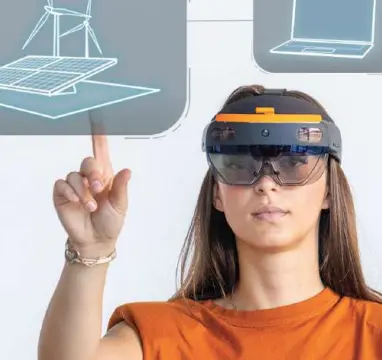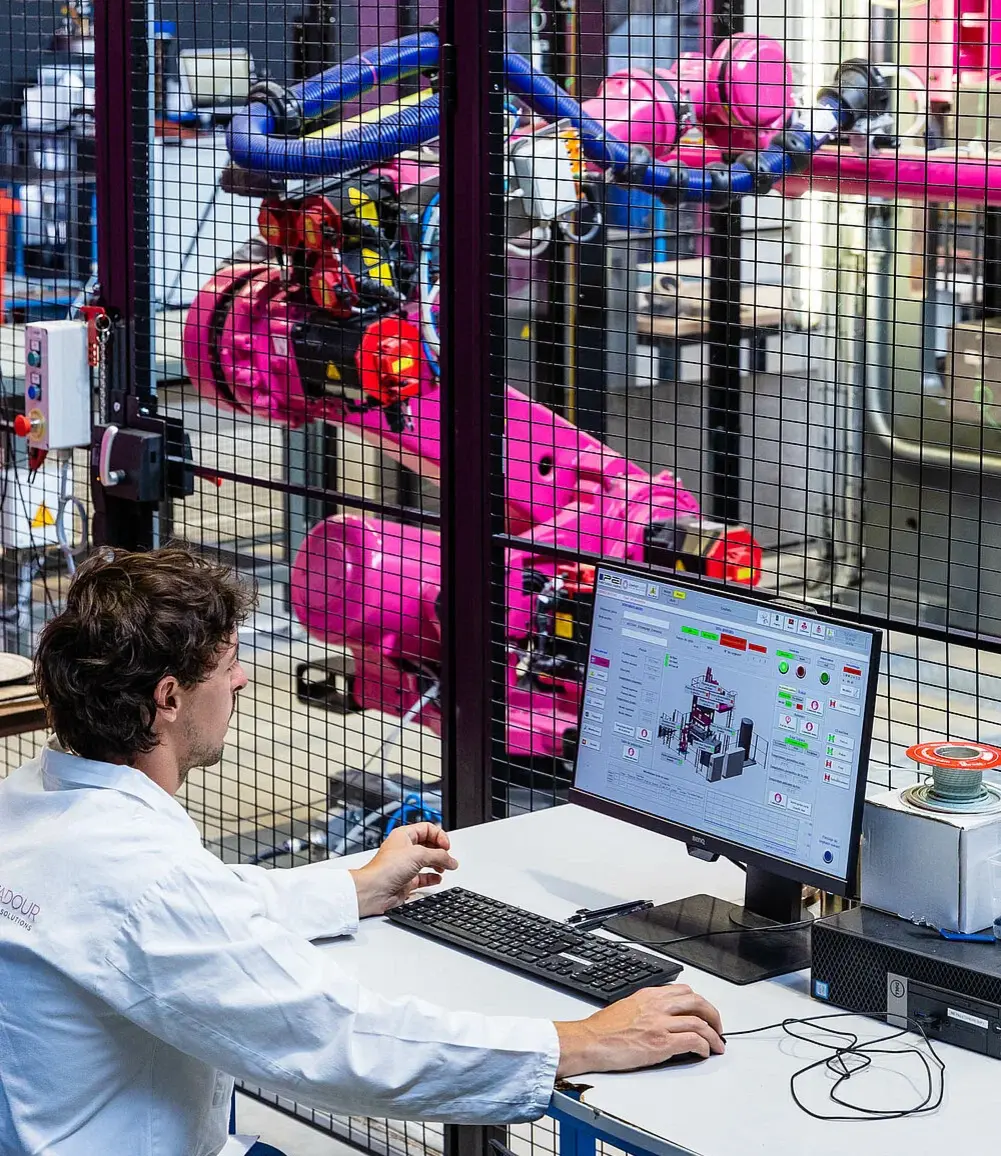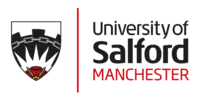Professions and careers of the future
ESTIA trains trilingual general engineers, who are responsible for design and methods offices, production and major projects.
ESTIA trains them to master mechanics, electronics, energy and IT so that they can be operational in a wide range of sectors: aeronautics, space, automotive, mechatronics, energy, R&D, agri-food, capital goods and IT.
Le profil de l'ingénieur ESTIA
Cursus d'ingénieur généraliste, l'ingénieur ESTIA est spécialiste de l’intégration des technologies grâce à une formation très large en mécanique, électronique, génie électrique, énergies renouvelables, informatique, management et génie industriel, sciences humaines.
En plus du diplôme d’ingénieur ESTIA, tous les étudiants préparent en simultané un 2e diplôme européen de Master.
Immergé dans un écosystème d’innovation et de recherche scientifique et technologique, l’ingénieur ESTIA est entraîné à innover, à prendre des risques et à oser. Il pilote des grands programmes et projets complexes.
Interactions permanentes avec les entreprises grâce à un campus situé sur une technopole et un réseau constitué d’entreprises de secteurs d’activité diversifiés. Chaque étudiant cumule 11 mois minimum de stage et missions en entreprise ou expérimente l’entreprise par la voie de l’apprentissage.
Français, anglais et espagnol ou autre 3ème langue vivante (les enseignements sont adaptés à ceux qui n'ont jamais étudié l'espagnol avant).
Prise d’initiative et pédagogie en mode «projets » stimulent l’entrepreneuriat auprès des étudiants.
Transition socio-écologique et RSE, projets d’application intégrant l’éco-conception sont au cœur des enseignements. Signataire de l’accord de Grenoble de la COP2 étudiante, l’ESTIA propose de nombreuses actions sociétales engagées. Le campus vise l’autonomie énergétique, la neutralité carbone et un impact environnemental positif.
Suivant le parcours choisi, l’étudiant effectue des séjours académiques en Angleterre, en Espagne ou à l’étranger dans nos universités partenaires et en Europe dans le cadre du programme Erasmus.
Second European diploma for all
In addition to the ESTIA Engineering degree, you will also obtain a Master of Science or University Master's degree from one of ESTIA's academic partners in the UK, Spain or France.
18 double degree courses with the universities of
- Cranfield, Wolverhampton, Salford-Manchester, in the United Kingdom,
- the University of the Basque Country in Bilbao and San Sebastian, the University of Mondragon and ETSIAE in Madrid, Spain,
- université Paris-cité, IAE Bayonne and Université de Pau et des Pays de l'Adour, Université Côte d'Azur
A generalist engineer without borders
The ESTIA engineer knows no borders: teachers of several nationalities, trilingual teaching and courses abroad.
You can immerse yourself directly in the international world of ESTIA with stays and courses in England, Spain or France (depending on the course chosen by the student). It is also possible to spend academic semesters abroad as part of the Erasmus programme: Great Britain, Spain, Germany, Italy, Portugal, Czech Republic, Norway, etc. and outside Europe: Colombia, Mexico, Japan, Taiwan, Chile, etc
International mobility throughout the world
In addition to the 3rd year co-degree courses, each student has an international experience during their ESTIA course:
- as part of a non-degree-granting academic mobility programme lasting at least 1 semester in Europe, Asia, Latin America, Africa, etc.
- as part of an internship or work placement (for apprentices)
Engineering school rankings
ESTIA is part of group A of the best engineering schools in France according to the 2024 ranking by L'Etudiant and is ranked 1st among engineering schools in the Best School Experience - Happiness Barometer 2024 ranking by the Speak&Act label. ESTIA also stood out by receiving a score of 4.73/5.
Innovative teaching methods
The material resources made available (digital environment with a laptop equipped with all the software needed for teaching, connected teaching platforms, wifi, technical platforms and fablabs, industrial technology platforms) allow everyone to gain autonomy and experience in a professional environment.
By encouraging students to take the initiative and assume responsibility, and by involving teachers and students in events, workshops and seminars, ESTIA enables everyone to reveal their creative qualities, and fosters a permanent spirit of innovation that characterises the "Estia touch"!
Students have access to a prototyping space (Fablab 4.0) where they can quickly go from idea to physical object and realise their innovations. This technology hall is equipped with innovative equipment (3D printers, 3D scanners, laser and water jet cutting, numerically controlled machining, welding and electronic measurements, cobots and robots, "factory 4.0" equipment, etc.).
ESTIA engineers are trained to innovate, to think outside the box and to follow well-trodden paths. Depending on their personal tastes and career prospects, they can choose from 3 courses and 18 career options in 3rd year, and personalise their curriculum by opting for in-depth modules and expertise.
1st year engineering programme
COMMON TRUNK
UNIT 1: SCIENTIFIC AND TECHNICAL FOUNDATION
- Mathematics - Reinforcement of thematic skills depending on the original training in : Mathematics, Mechanics, EEA, Computing, Communication
UNIT 2: ELECTRONICS, ELECTRICAL ENGINEERING & AUTOMATION
-Electronics - Electrical Engineering - Automation
COURSE 3: INFORMATION TECHNOLOGY
-Version Management System - Database Management System - Static Web Development Procedural Programming
UE4: MECHANICS & MECHANICAL TECHNOLOGY
- Mechanical Design and 3D CAD - Materials and Manufacturing - Structural Mechanics
COURSE5: ENGINEERING
-Product Life Cycle Introduction to Product Life Cycle Management (PLM) - Mechanical Engineering Project - EEA Engineering Project (Electronics, Electrical Engineering & Automation) - IT Engineering Project
UNIT 6: INDUSTRIAL MANAGEMENT AND PRODUCTION ENGINEERING
- Organisation of production systems
UE 7: HUMANITIES
- Company discovery - Sustainable development - Socio-ecological transition issues
UE 8: PROFESSIONS
- Professional Integration - Entrepreneurship, Business Creation Seminar - Project Management and Agility - English and Spanish, FLE
Innovation projects to learn by creating
EXAMPLES OF PROJECTS :
MECHANICAL ENGINEERING PROJECT CAD development on soft mobility, additive manufacturing of automotive parts, etc.
EAA PROJECT : Radar speed detector, digital thermometer, intelligent heating, intelligent watering, portable solar tracker, obstacle detection system for robots, etc.
COMPUTING PROJECT: Creation of a digital tool for image processing on the web, remote control of greenhouses for organic farming, etc.
2nd year engineering programme
COMMON TRUNK
UNIT 1: SCIENTIFIC AND TECHNICAL FOUNDATION
- Applied statistics - Transforms - Computer tools for mathematics
COURSE 2: ELECTRONICS, ELECTRICAL ENGINEERING & AUTOMATION
- Microprogrammed systems - Automation - Control of discrete systems
UE 3: COMPUTER SCIENCE
- Object-oriented programming, event-driven programming (dynamic web) - Communicating mobile systems - Application and integration work
UE4: MECHANICS & MECHANICAL TECHNOLOGY
- Materials and manufacturing Level 2 - Mechanical construction - Assembly and dimensioning Level 2
UE5: ENGINEERING
- Engineering for systems design - Socio-ecological transition to eco-design
UE 6: INDUSTRIAL MANAGEMENT AND PRODUCTION ENGINEERING
- Industrial Methods and Techniques ("Business Management") - Information Systems and ERP - Decision Support
UE 7: HUMANITIES
- Tools and basics of Lean Management - Introduction to Management
UE 8: TRADES
- Industrial Robotics Level 1 - Professional integration - English and Spanish - FLE Choice of trade expertise
Customise your individual path with a choice of modules
OGI - Organisation & gestion industrielle
Gestion de production
Qualité et amélioration continue Niv. 2
Chaines logistiques
Gestion financière (micro/macro)
Multi-disciplinary project for an organisation or company
Here are a few examples:
BRIGADE SAPEURS-POMPIERS PARIS Modelling the integration of a sensor (LIDAR, stereo camera, etc.) into firefighters' equipment capable of mapping their response environment indoors as soon as they are reconnoitred.
AERIALMATERIC Design of a capsule for transporting medical products by drone/ Composite manufacture of a drone fuselage for transporting medical products.
ENARGIA Developing a product/service concept based on the production of autonomous hydraulic energy from the recovery of a bicycle wheel with an electric motor hub.
ASSOCIATION LA ROUE QUI TOURNE Design of a transportable launching chair for people with reduced mobility.
NAASC Nanosatellite project - Scientific experimentation in a sounding balloon
rENAULT Experience simulator for Renault cars
3rd year engineering programme
Students choose one of 3 pathways (Digital Design & Innovation - Mechatronics, Systems & Energy - Industrial Organisation and Management). Each of these pathways enables engineering students to enrol for a 2nd specialised diploma corresponding to a career direction. Below is a map of the 18 career paths for the start of the 2024 academic year.
Digital Design & Innovation pathway
Assessment - obtaining the engineering degree
Passing from the 1st to the second year and then from the second to the third year of the engineering cycle is decided by a passing jury, taking into account the results of the continuous assessments carried out during the year. The terms and conditions are set out in the study regulations issued on entry to the course. To obtain the title of engineer, students must acquire 180 ECTS credits, validate and defend their end-of-study project, achieve a minimum level of English (level C1) and complete an international mobility programme lasting at least 3 months.
An international, generalist engineering course with a double degree, including apprenticeships
In addition to full-time student status, students can choose to follow their course through an apprenticeship.
Students who choose to do an apprenticeship at ESTIA benefit from the same dual degree system without extending their study time. At the end of their course, in addition to the ESTIA engineering degree, they obtain a second European Master's degree or a recognised professional qualification.
This option combines the 2 statuses of student engineer and company employee. The school and the company work together to ensure that the student receives the knowledge and develops the skills of the ESTIA engineering reference framework with the same programme and an adapted timetable. Apprentices have access to all the options and career choices offered by the school.
Note that BTS students must follow the apprenticeship programme.
See the sandwich course timetable
ESTIA also offers 3 other apprenticeship courses with partner CFAs in mechatronics / agri-food / industrial cybersecurity
The contractor engineer
Business (its constant adaptation, innovation, markets, etc.) is an integral part of the ESTIA engineer's "training landscape". Throughout their training, they are brought into direct contact with the activities of the creators housed in the incubator.
The educational aim of the work placements is to take part in industrial activities on subjects that meet a real need in the company.
- At the end of 1st year: a 2-month work placement* enables you to gain a deeper understanding of the structures, challenges and practices of the industrial world in which you will be working in the future.
- At the end of 2nd year: a 3-month work placement* enables you to apply the knowledge you have acquired to a measurable industrial application.
- At the end of 3rd year: a 6-month "professional assignment" enables you to carry out a project in the engineer's speciality, in line with the company's strategy and necessary for its business plan.
* The work placement takes place in France or abroad. On return, a public presentation is made to a panel of teachers and practitioners.
These are research and development projects carried out within the school, based on the needs of industry and designed to provide an initial application of theoretical lessons. The "methods", "costs" and technical aspects are compulsorily covered. They are supported by experienced professionals.
They enable the student engineer :
- Get to grips with the problems involved in carrying out a project, both in terms of initiative and team spirit, and in terms of organisation, budget, supplies, etc.
- Apply the concepts of the "Engineering Methods" module in the design and development of the project.
- Work with industrialists and outside experts.
- Produce prototypes (hardware or software).
ESTIA offers all its engineering students exciting opportunities to develop and showcase their creativity:
- The 24 Hours of Innovation
- Act In Space
- Student and Young Entrepreneur Workshop
- Africa Basque Challenge
- Participation in several national competitions: Défi Aérospatial, Coupe de France de Robotique, Dassault UAV Challenge, etc.
ESTIA engineering students are trained in creativity, innovation and business creation. To spread the entrepreneurial spirit, stimulate the creation of activities, develop autonomy and design entrepreneurship, stimulate the creation of activities, develop autonomy and design entrepreneurship as a means of professional integration.
ESTIA ENTREPRENDRE runs an incubator for start-ups and incubators for innovative activities in several thematic areas:
- Digital engineering, image processing, software publishing, embedded systems, IOT / AI
- Design, outdoor and sports industries
- Robotics and advanced manufacturing
Careers
Professions and careers with a future
ESTIA engineers receive scientific and technological training combined with a solid industrial culture, which prepares them for three types of function:
These disciplines of industrial engineering and mechatronics open up a very wide range of professions, which develop a global vision of the company and take into account its permanent need for innovation and evolution. The teaching approach alternates theory and practice, during a trilingual curriculum that prepares ESTIA engineers to fully exercise their responsibilities in a world without borders:
A wide range of career opportunities
In all professional sectors, thanks to your broad skills in engineering, project management and innovation, as well as the systemic approach of the ESTIA programme.
In all countries, thanks to your fluency in French, English and Spanish.
Our young graduates quickly gain access to responsibilities for their first job:
80% are responsible for a project
40% are responsible for a budget
25% manage a team
20% are responsible for a department
Taux net d'emploi à 6 mois :
92% en 2022 - 91% en 2023
Possible further studies
There are many opportunities for further study after engineering studies in Specialised Masters, Masters and MBAs in economics and management. Information can be obtained from the Partnership-Internship-Integration Department (05 59 43 84 00).
Engineers can also prepare a doctoral thesis in 3 years. The ESTIA RECHERCHE team provides information and help with thesis preparation. Contact: n.couture@estia.fr
Accessibilité
Le cycle Ingénieur généraliste international est handi-accessible.
Dispositif EBS à l'ESTIA
Le dispositif EBS-ESH (Elèves avec Besoins Spécifiques, en Situation de Handicap) pour objectif d’aider tout élève qui rencontre des difficultés de santé passagères ou installées, en vue de favoriser son parcours à l’ESTIA. A ce jour, l'ESTIA compte près de 3% d'élèves concernés par ce dispositif, soit le double de la moyenne nationale dans les autres écoles. L'ESTIA est engagé dans une démarche de labélisation pour l'accessibilité physique et pédagogique de ses enseignements.
Tout élève qui souhaite bénéficier d'aménagements peut contacter soit les référentes de sa promotion (Eheina IRAZOQUI ou Isabelle ETCHEVERRY), soit contacter directement le référent EBS ESH (Patrick BADETS - p.badetsestia.fr). Le but est de définir des solutions d'aménagement et de compensation efficaces et discrètes en partenariat avec l'élève concerné. Ces solutions concernent à la fois les cours, TP, TD et Examens, en présentiel ou distanciel à l'ESTIA, mais aussi l'intégration en entreprise (stage ou apprentissage).
Rates
International schooling for all at a preferential cost
All ESTIA students have the opportunity to obtain a double international degree. Indeed, acquiring a 2nd Master's degree attesting to a double specialised skill is one of ESTIA's fundamental and differentiating points, appreciated and recognised by employers. The tuition fees cover enrolment at ESTIA, the specific costs of the 2nd degree and the provision of a digital environment with a laptop equipped with all the software needed for the courses. In just 3 years, ESTIA gives students access to a double engineering and European Master's degree at preferential rates.
For students following the apprenticeship route, the ESTIA engineering course is free as it is paid for by the company. For the international course and the double European diploma (optional for apprentices), there is an additional charge of 4,900 euros per year for the work-linked years of study.
1st year €8,000
2nd year €8,000
3rd year €8,000
(these rates do not apply to apprenticeships, continuing education courses and VAE)
Admission to the ESTIA engineering cycle
ESTIA will be recruiting 260 engineering students at the beginning of September 2025.
Admission is based on different competitive entrance exams depending on the applicant's origin.
Click below to consult the procedures according to your profile
Go to the admissions page

























